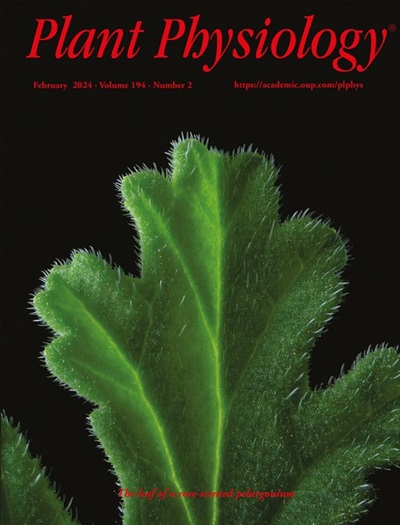MIKC*-type MADS transcription factors control JINGUBANG expression and the degree of pollen dormancy in Arabidopsis
IF 6.5
1区 生物学
Q1 PLANT SCIENCES
引用次数: 0
Abstract
While pollen dormancy has been proposed to play a necessary role in sexual reproduction, it remains poorly understood. Here, we used traditional pollen germination assays to characterize dormancy. Our results underscore variation in the degree of dormancy between individual pollen grains. In addition, we provide evidence that JINGUBANG (JGB), previously defined as a negative regulator of pollen germination in Arabidopsis (Arabidopsis thaliana), is responsible for the uneven degrees of pollen dormancy, as asynchronous pollen germination in vitro reflected varied expression levels of JGB. We identified five cis-acting elements, including four CArG-boxes and the previously uncharacterized element ERE7, as essential for the initiation and enhancement of JGB expression. A 10-bp sequence between CArG-box 3 and ERE7, likely the result of an inverse DNA loop formed between CArG-box 3 and CArG-box 4, was required for robust gene expression. In addition, the pollen-specific AtMIKC*-type MADS transcription factors AGAMOUS-LIKE 30 (AGL30), AGL65, AGL66, AGL94, and AGL104 activated JGB transcription. Notably, the transactivation levels differed among the obligate AtMIKC* heterodimers tested. Our results indicate that distinct AtMIKC* complexes formed in individual pollen grains direct pollen dormancy to uneven degrees, which is likely an adaptive trait that ensures broader pollen dispersal under adverse environmental conditions.MIKC*型MADS转录因子控制拟南芥中JINGUBANG的表达和花粉休眠程度
虽然花粉休眠被认为在有性生殖中发挥着必要的作用,但人们对它的了解仍然很少。在这里,我们使用传统的花粉萌发试验来描述休眠的特征。我们的研究结果表明,不同花粉粒的休眠程度存在差异。此外,我们还提供了证据,证明之前被定义为拟南芥花粉萌发负调控因子的 JINGUBANG(JGB)是造成花粉休眠程度不均的原因,因为体外花粉萌发不同步反映了 JGB 不同的表达水平。我们确定了五个顺式作用元件,包括四个 CArG-框和之前未表征的元件 ERE7,它们对 JGB 表达的启动和增强至关重要。CArG-box3和ERE7之间的10-bp序列可能是CArG-box3和CArG-box4之间形成的反向DNA环路的结果,是基因强劲表达所必需的。此外,花粉特异性 AtMIKC* 型 MADS 转录因子 AGAMOUS-LIKE 30(AGL30)、AGL65、AGL66、AGL94 和 AGL104 也激活了 JGB 的转录。值得注意的是,所测试的强制性 AtMIKC* 异源二聚体的转录激活水平各不相同。我们的研究结果表明,在单个花粉粒中形成的不同 AtMIKC* 复合物会在不同程度上引导花粉休眠,这可能是一种适应性特征,可确保花粉在不利环境条件下更广泛地传播。
本文章由计算机程序翻译,如有差异,请以英文原文为准。
求助全文
约1分钟内获得全文
求助全文
来源期刊

Plant Physiology
生物-植物科学
CiteScore
12.20
自引率
5.40%
发文量
535
审稿时长
2.3 months
期刊介绍:
Plant Physiology® is a distinguished and highly respected journal with a rich history dating back to its establishment in 1926. It stands as a leading international publication in the field of plant biology, covering a comprehensive range of topics from the molecular and structural aspects of plant life to systems biology and ecophysiology. Recognized as the most highly cited journal in plant sciences, Plant Physiology® is a testament to its commitment to excellence and the dissemination of groundbreaking research.
As the official publication of the American Society of Plant Biologists, Plant Physiology® upholds rigorous peer-review standards, ensuring that the scientific community receives the highest quality research. The journal releases 12 issues annually, providing a steady stream of new findings and insights to its readership.
 求助内容:
求助内容: 应助结果提醒方式:
应助结果提醒方式:


